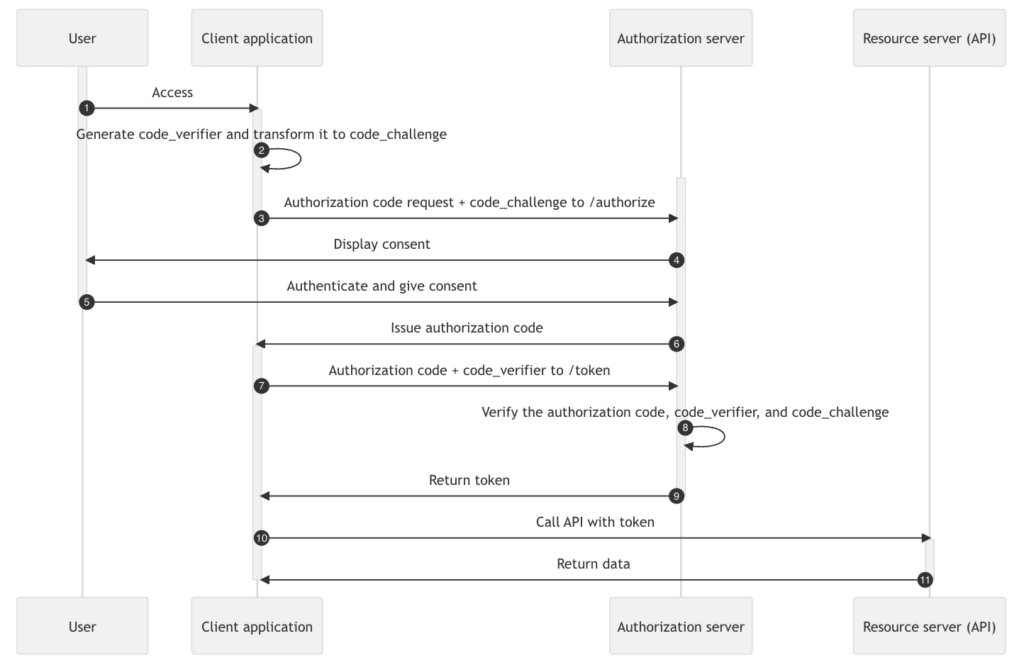Category: Integration
Integrating CIAM into a consumer-centric software solution.
-

Why Account Linking Should Be Pivotal in your CIAM SSO
Account linking isn’t just a technical feature, it’s a strategic capability you’ll almost certainly want to employ. The ability to recognize and unify customer identities not only offers a competitive advantage, but in an SSO context is a necessity to unlocking the full potential of the user experience, data integrity, personalization, security, and compliance.
-

Vibe Coding Authentication via Authorization Code Flow
Developers frequently inquire about integrating CIAM Authentication via a standard like OIDC. Using Authorization Code Flow as the recommended best practice, this article explores using Vibe coding with Copilot AI to addresses the practical steps required in a Next.js application, leveraging NextAuth.js and Keycloak as part of the solution design.
-

Architecting a CIAM Solution
CIAM architecture includes several core components all working together to deliver a seamless and secure experience for users. By adopting best practices in security, privacy, and user experience, B2C and B2B SaaS developers can build trust with their customers while ensuring compliance with evolving data protection regulations.
-

An API-First Approach to CIAM
Customer Identity and Access Management (CIAM) involves addressing a variety of scenarios in an increasingly complex digital landscape. Adopting an API-first approach offers several advantages, particularly when it comes to integrating with your existing management systems and doing so in the context of Continuous Integration (CI) and Continuous Deployment (CD).
-

Cooked to Perfection using WordPress, OpenFGA, and Keycloak
Building a SaaS application with CIAM integrated as a DIY option can be a challenging prospect. In this article I’m going to explore how I’m using WordPress, Keycloak and OpenFGA to build B2B SaaS solutions with comprehensive CIAM integrations.
-

CIAM Attack Vectors and Protecting Against Them
Protecting your CIAM is critical to ensuring that customer data remains secure and that only authorized users can access services. With the increasing sophistication of cyber threats, a multi-layered security approach to prevent common attacks like credential stuffing, brute force, phishing, and account takeover is a crucial aspect of any implementation.
-

What Can CIAM Do For You?
In an era where digital interactions are paramount to business success, Customer Identity and Access Management (CIAM) has become an essential component of a secure, efficient, and personalised customer experience. By providing seamless and secure access to digital services, CIAM not only enhances security but also fosters customer loyalty with regulatory compliance.
-

Understanding B2C vs B2B SaaS CIAM
While both B2B and B2C applications utilise the SaaS model, the differences in their target audiences, pricing, sales processes, user experience, and support systems are significant. Particularly from a CIAM perspective. B2B SaaS applications are more complex, designed for organisations, and emphasise customisation, scalability, and integrations, whereas B2C applications focus on providing simple, user-friendly solutions for individual consumers.
-

OIDC, SAML and OAuth 2.0
Many developers have encountered the terms OIDC, SAML and OAuth 2.0. However, hearing about them and knowing what they are — as well as when to use them — are very different things. Read more about these modern CIAM protocols and why you should consider using them.




































